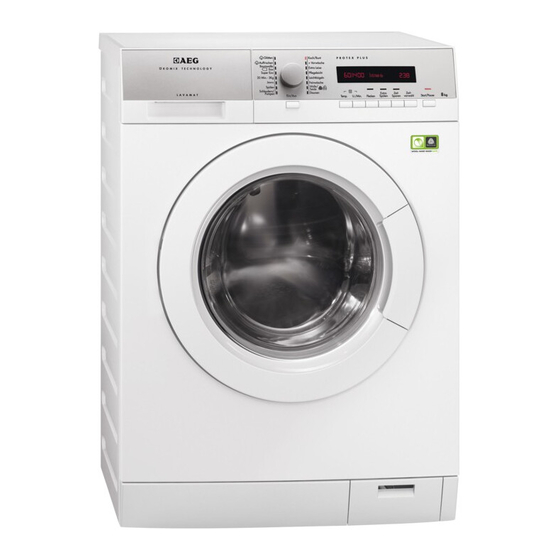AEG L 79685 FL Podręcznik użytkownika - Strona 10
Przeglądaj online lub pobierz pdf Podręcznik użytkownika dla Spryskiwacz AEG L 79685 FL. AEG L 79685 FL 28 stron.

10
www.aeg.com
Programme
Temperature
range
Refresh
40°C
Anticrease
40°C
1) To reduce the creases of the laundry, this cycle regulates the water temperature and performs a soft
wash and spin phase. The appliance adds some rinses.
2) During this cycle the drum rotates slowly to ensure a gentle washing. It can seem that the drum
doesn't rotate or doesn't rotate properly. Consider this as a normal functioning of the appliance.
3) Set the spin speed. Make sure it agrees with the laundry. If you set No Spin option the only drain
phase is available.
4) Set this programme to decrease the energy and water consumption maintaining a good washing per-
formance.
5) Standard programmes for the Energy Label consumption values. According to regulation
1061/2010, these programmes are respectively the «Standard 60°C cotton programme» and the «Stand-
ard 40°C cotton programme». They are the most efficient programmes in terms of combined energy and
water consumption for washing normally soiled cotton laundry.
The water temperature of the washing phase may differ from the temperature declared
for the selected programme.
6) If you set a Steam programme with dried laundry, at the end of the cycle the laundry could be humid.
It is better to expose the items to the fresh air for about 10 minutes to let the humidity dry. When the
programme is completed, quickly remove the laundry from the drum. After a steam cycle, items may to
be ironed anyway, but with less effort!
7) Steam does not remove animal odours.
Programme options compatibility
Cottons
Cottons + Prewash
Extra Silent
Synthetics
Easy Iron
Maximum load
Programme description
Maximum spin
(Type of load and soil level)
speed
Steam programme for cotton and synthetic items.
1.5 kg
This cycle removes odours from the laundry.
1.5 kg
Steam programme for cotton and synthetic items.
This cycle helps to dewrinkle the laundry.
■
■
■
■
■
■
■
■
■
■
■
■
■
■
■
■
■
7)
■
■
■
■
■
■
■
■
■
■
